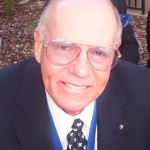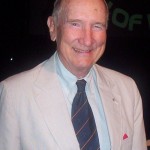By Fred “Crash” Blechman

At Boeing Park in Lancaster, Calif., a full-size F-4 Phantom II jet on a pedestal soars above some of the monuments and plaques of the Aerospace Walk of Honor.
On September 15, the city of Lancaster, Calif., celebrated Antelope Valley’s rich aviation and aerospace heritage with its 18th annual Aerospace Walk of Honor. Five esteemed aviators joined 85 former inductees that have been honored. They are Capt. Robert L. Crippen, Col. Robert C. Ettinger, Lewis A. Nelson, Charles Tucker and George S. Welch.
Along Lancaster Boulevard and at Boeing Park (at the intersection of Sierra Highway and Lancaster Boulevard), monuments with etched bronze plaques honor the inductees. The Aerospace Walk of Honor is the only walk in the nation honoring test pilots. Established in 1990 by the Lancaster City Council, the Wall of Honor recognizes test pilots associated with Edwards Air Force Base whose aviation careers are marked by significant achievements.
At 11:00 a.m., under a full-size pedestal-mounted F-4 Phantom II jet, new plaques were unveiled on one of the six monuments at Boeing Park in recognition of the five honorees. That afternoon, 350 people attended free ceremonies conducted in the Lancaster Performing Arts Center auditorium.
Mayor Henry W. Hearns opened the ceremonies, and City Manager Robert S. LaSala introduced a video of previous honorees. Alisa Clausen introduced the new inductees, each escorted by a city official.
Capt. Robert L. Crippen
Navy Capt. Robert L. “Crip” Crippen, 69, became an astronaut in 1969. He piloted Columbia in April 1981 during the first space shuttle mission and commanded three other space shuttle missions.
Crippen was director of Kennedy Space Center from 1992-1995. He’s logged 6,500 flying hours and more than 565 hours aboard space shuttles.
Col. Robert C. Ettinger
Col. Robert C. Ettinger, 71, was the first pilot to fly the full-scale F-16 Falcon jet fighter. He served as vice commander of the Air Force Test Center and was the flight test manager for Northrop Grumman’s Global Hawk program. He’s logged 6,600 hours in more than 100 types of aircraft and sailplanes.
Lewis A. Nelson
Lewis A. Nelson, 86, was an Army Air Forces pilot in World War II. He was a Northrop experimental test pilot from 1950 to 1972, and was involved in testing the F-89, N-156, F-5, T-28 and other aircraft.
Nelson held a number of senior positions with Northrop, including director of the flight test engineering section and program manager for the T-38/F-5 programs. The recipient of two Distinguished Flying Crosses and four Air Medals, he’s logged 5,000 hours.
Charles Tucker
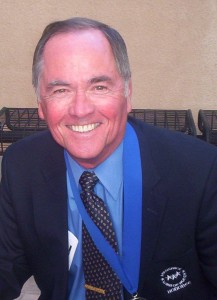
Retired Navy Capt. Robert L. Crippen piloted the first space shuttle mission in 1981 and commanded three others. He spent 565 hours aboard space shuttles.
A USAAF fighter pilot in World War II, Charles Tucker, 87, made the first flight of the X-4 at Edwards Air Force Base in December 1948 and was one of the first Army Air Forces pilots to fly the Bell P-59, America’s first jet.
As a test pilot for Northrop, he flew the F-89 Scorpion and the YB-49 Flying Wing. He later became a Lockheed experimental test pilot. He’s logged 10,000 hours on a variety of aircraft, including 2,000 hours in jets.
George S. Welch
On Dec. 7, 1941, George S. “Wheaties” Welch was one of the first pilots to shoot down a Japanese plane at Pearl Harbor. He scored four victories that day and was awarded the Distinguished Service Cross for those actions. By the time he ended his combat career, he was credited with 16 confirmed victories, ranking him among the top 35 Army Air Forces aces of World War II.
After leaving the USAAF in July 1944, Welch became chief test pilot for North American Aviation. While flying the XF-86 on April 26, 1948, he became the first civilian pilot to exceed Mach 1 in a jet-powered plane. He made the first flights of that aircraft and the YF-100 Super Sabre.
Welch made his last flight on Oct. 12, 1954. On that day, as he conducted a structural demonstration flight of the F-100A jet fighter at Edwards, a design flaw in the vertical tail caused the aircraft to tumble out of control during a Mach 1.5 dive. Welch ejected, but later died from injuries. John Meek represented him at the ceremony. Meek is arduously pursuing a posthumous Medal of Honor for Welch’s action at Pearl Harbor.
Keynote speaker John Chatterton
The event keynote speaker was John Chatterton, one of the world’s most accomplished and well-known shipwreck divers. He’s best known as co-host of the History Channel’s “Deep Sea Detectives.” His talk was titled “From the Sea to the Sky – Unearthing the Pioneering Spirit.” He included a video that linked deep sea diving to test pilots, paralleling the risks, pressures on their bodies and reasons for what they do.
Alyssa Rossi
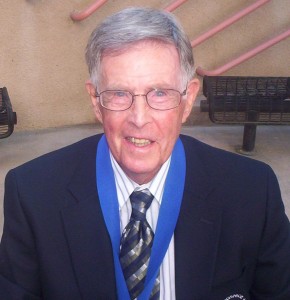
Lewis A. “Lew” Nelson earned two Distinguished Flying Crosses and four Air Medals in World War II. He was a Northrop experimental test pilot from 1950 to 1972, and later held a number of senior positions with the company.
Alyssa Rossi treated guests and honorees to two performances. After the introduction of the honorees and their escorts, the 16-year-old blind vocalist offered up a stirring rendition of “The Star Spangled Banner.” She ended the ceremony with a rousing vocal of “God Bless America.”
Scholarship presentation
After honorees received engraved medallions, each presented scholarships in his name to a local student. Rheanna McKnight received the Robert C. Ettinger Scholarship and Jason Disbrow received the Robert L. Crippen Scholarship. Lewis A. Nelson presented his scholarship to Jeremy Entwistle and Charles Tucker presented his to Ryan Glomboske. Manpreet Singh received the George S. Welch Scholarship.
Meet the honorees
A closing video tribute signaled a move to the auditorium’s patio, where guests could meet their heroes. Honorees answered questions and autographed the 2007 awards program, a glossy 16-page collector’s item that included many photos of the inductees.
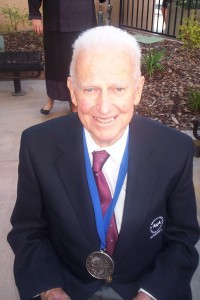
Charles Tucker was one of the first U.S. Army Air Force pilots to fly the Bell P-59, America’s first jet. In December 1948, he made the first flight of the X-4 at Edwards Air Force Base.
- Retired Air Force Col. Robert C. Ettinger was the first pilot to fly the full-scale F-16 Falcon jet fighter and was the flight test manager for Northrop Grumman’s Global Hawk program.
- Past honorees in attendance included Robert J. Gilliland, a former Lockheed SR-71 Blackbird test pilot who was recognized in 2002.













